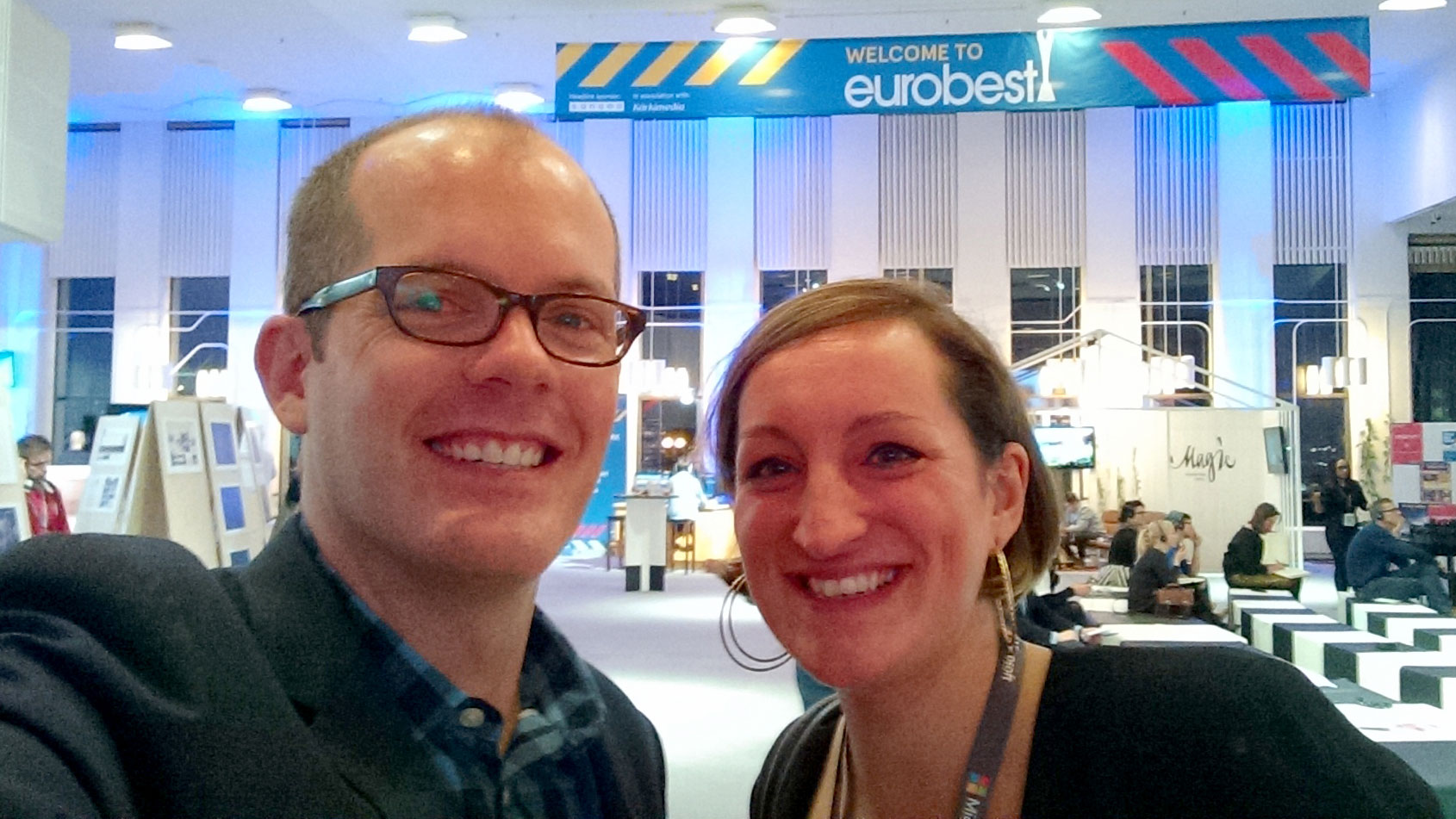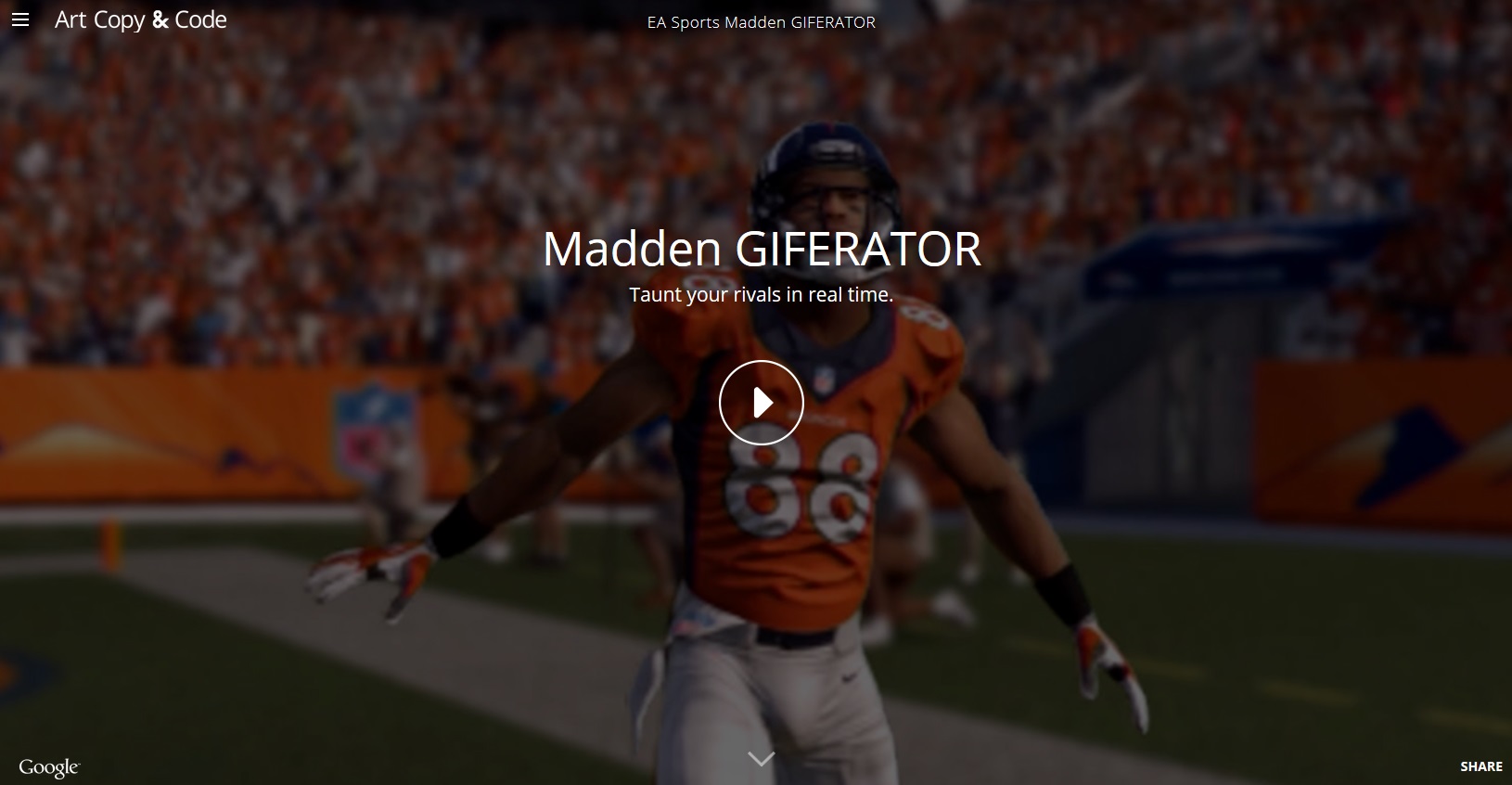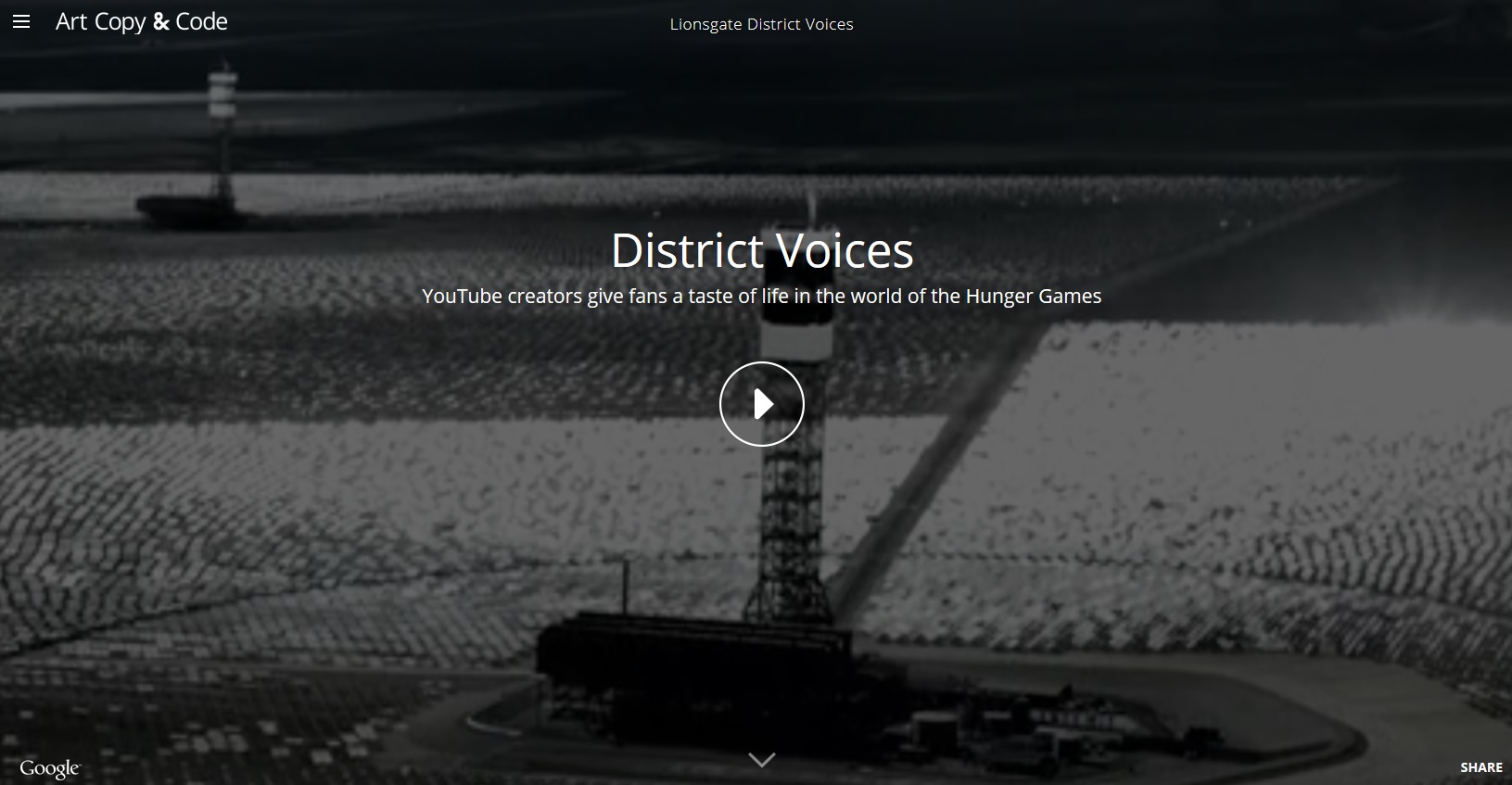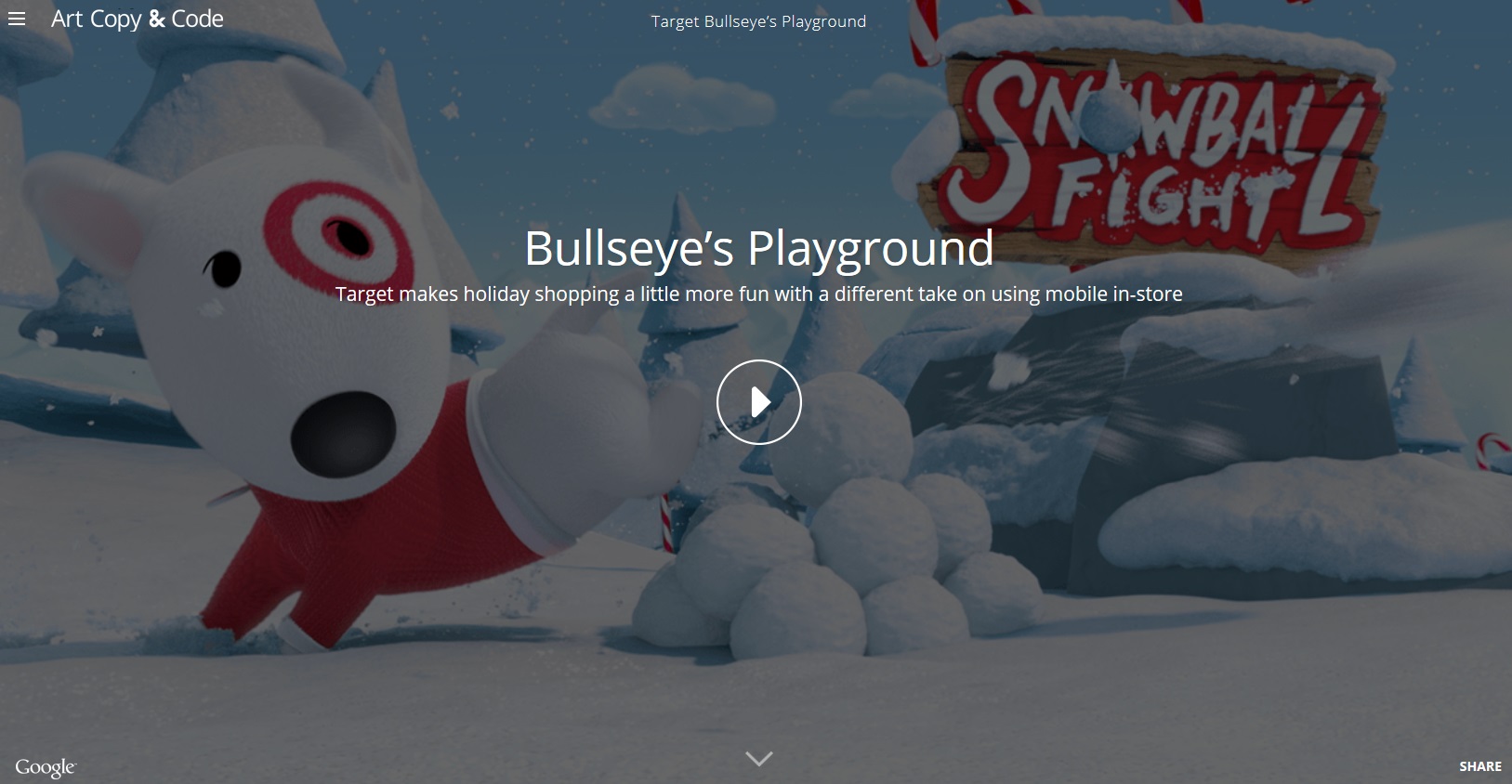
Selfie: Mike Glaser (Google), Sophie Berke (BEO)
BEO: Can you quickly explain what you do at Google?
Mike Glaser: I’m one of the Marketing Leads for a programme called Art, Copy & Code, which is a Google initiative in which we work closely with brands and agencies to build consumer experiences that we hope people will love and remember and share. And there are two sides at that: 1.) is we work on a lot of the Google products, from ads to YouTube to Chrome. And 2.) we work with other brands and their agencies to develop the creative campaign. We also spend a lot of time thinking about what the future of advertising might be. Since we can’t predict the future, we try to get ready for it by testing and learning about new things on Google platforms. So we do these short partnerships of three to six months, where we work side by side with brands and their agencies and build new things, try new applications and learn. So that when that future does comes, and whatever advertising looks like then, we’re one step closer to being ready for it.
BEO: In the end, that is what Google has always been doing, trying to be on top of things?
Mike Glaser: If you go back to Google’s mission, it’s all about organizing the world’s information and making it universally accessible and useful. And with that, delivering great consumer experiences through our products. So wherever advertising and marketing goes in five years, we want to make sure consumers still have a great experience, brands are able to build their brands effectively, and Google is part of that ecosystem. And this is fun. I love to go to work because you get to work on these products that people use, whether it’s Search, YouTube, or Android.
BEO: And you also work out in the field. During your speech at Eurobest you talked about the EA Sports Madden GIFERATOR case. Can you tell us a bit more about it?
Mike Glaser: There is a lot of great research out there that talks about the rise of the second screen. People watch their TV with their mobile phones. So we thought it’s interesting to see what people are actually doing there. We spent a couple of weeks in the field doing ethnographic research and we met all these amazing people who were die-hard sports fans. We sat in their living rooms watching football and soccer and hockey. We sat with them, and learned from them. They all had these very elaborate set-ups with their laptop here, beer there, using their phone for another thing. So we just want to better understand from a consumer standpoint, what they are doing when they’re on their second screens, and what they are hoping to get out of it. And what we heard was that they want highly relevant information. So when I see something in a football game I like, I want to be able to find out more about it, for example what this player’s stats are. People want really relevant content, bite-sized. If I say “Hey, my favourite quarterback is 22 years old”, that’s something I will want to share with my friends right away. And I do that because it makes me look cool, or funny. So the human insights part of our field research was fascinating, and we used it as inspiration for the EA Sports campaign. Our question was: Can we make the NFL TV watching experience better? We knew people were looking for funny images of the players seen on TV. And Madden has the most authentic video game out there for football, with great imagery.
BEO: What role did the value offered by the brand play in this case?
Mike Glaser: We had a very helpful conversation upfront, discussing “does this piece of marketing have to sell video games? Do I need a giant ‘buy this now’ button in this ad?” And we made the decision “No”. This was really all about giving the consumer a piece of content that was fun, light and that is going to make their football watching experience better. Because that is what the research said. The result was that people wanted to interact with it. They spent an average of nine minutes in this experience, which is effectively an ad. There were 365.000 user generated GIFs in the first two months. This showed us that we were achieving our goals, because people were actually caring. The beauty of the web is that you get feedback right away and if it’s not good, you can fix it. With a client such as EA Sports, we sit together around a table and discuss what we can do and how, we’re not in the old brief-and-pitch situation. That actually enabled better work.
BEO: Who set the benchmarks for this project then?
Mike Glaser: The client had very detailed benchmarks, which makes sense because we don’t have the reference points that they have. Every week, we published a report for them. But in the beginning, it was hard to say which results were really good or bad, because none of us had experiences with creating a live GIF-generator before that. What we talk a lot about at Google, is that you have to be comfortable with risk. EA understands that, and this is also why this project worked so well.
BEO: And in the end the results helped you determine both the entertainment and advertising value of this content for the consumers?
Mike Glaser: In the end I think these two were very similar in this project. I look at these two things as two sides of the same coin. About a month ago we did some work with Lionsgate for the launch of the next Hunger Games movie, creating a project called “District Voices”. This partnership was more about developing really compelling content; branded content, one might call it. The idea here was: The Hunger Games franchise has some of the most passionate fans around the world. And there is a lot of time between these movies, so everyone is anticipating what’s going to happen. With Lionsgate, we wanted to explore branded content and to do so, we partnered with five different YouTube creators. Those are very distinct people with a lot passion in very different areas. So we asked them to make the content in their own style.
BEO: Were these YouTube creators working by themselves or with MCNs?
Mike Glaser: It was a combination. The MCNs offer a lot of value. There are, for example, three MCNs in Finland alone, and we recently held our first YouTube Creators event that gathered over 5.000 fans on site. A lot of times you want to find the right creator with the right voice and the right target group. So we have a team at Google that specialises on helping to find this talent. We work closely with the MCNs who help us identify the talent but also help the talent itself. They are a great partner in the whole ecosystem, because everyone wins. You find a partner that is very authentic and very excited to work with a brand, the brand gets someone who is amazing and creates great content and Google is here to be a part of that.
For the Hunger Games, we worked collaboratively with creators on the content of each video, and then transformed them into citizens of the districts, with authentic costumes & set design, and real props from the films. What was fascinating, was when the content went out, the comments really showed us that people loved it.
BEO: During your speech at Eurobest you talked us through the three central themes of the work you’re part of. Could you share these with our readers as well?
Mike Glaser: The first thing is building from mobile first. There are a couple of reasons for this. 1. The next generations are very likely to join the web with their phones. You and I used to join by inserting a CD-Rom and connecting a modem, but we need to build the future for these people now. 2. Once you get a phone you will keep checking it all day and spend a lot of time there. So now we have to design for this tiny little screen first. The good thing is, if you start with that screen, it’s easier to scale it up to a desktop version, instead of doing it the other way around.
The second theme is data. Google obviously likes data a lot. And there are a lot of great ways to use data to form your strategy and creative approach. We love to use data to power ideas. We use data not only in the beginning of the creative process, but also in the middle. In the EA Sports case for example, we used data to figure out on average what happens in a football game, so we could plan the creative. Taking it one step further, we actually took a data stream form the NFL (NFL publishes what’s going on in the game) and we used it to tell us what creative to show in the experience. Suddenly, you don’t need a whole lot of Creatives sitting in a room doing a war-room type approach to creative development, you write the code ahead of time and it knows what to serve and when.
The last one is something that we believe wholeheartedly. We need to build companions, not campaigns. So it’s less about creating interruptive ads, and more about creating compelling experiences that we can offer. The more we can create work that actually ads value, whether it be information, or utility, or entertainment, we all win. We win as consumers, but also as marketers and advertisers. In the end, we want to create things we would like to watch or engage with ourselves. I ask my wife about what she thinks when I get home at night; she is not from the advertising world and can tell me exactly if she would like this or that as a consumer. And I think we all have these people that we go to and ask them for some feedback.
BEO: What did you find particularly interesting at Eurobest so far?
Mike Glaser: I love projects with a simple idea and simple interaction, which shows us that storytelling still is key, when you have a brilliant simple message. There are also a few cases which are interesting from a technological standpoint, such as “Slow Down Dad” from Samsung. The way they combined mobile, maps and GPS is a really smart idea.
BEO: In the end, with branded entertainment, it’s less and less about the product and more about the message and the value of the brand. There are cases in which we can’t even see any placement at all.
Mike Glaser: Absolutely, and we actually see this on YouTube all the time. This is how Red Bull and Go Pro have built their businesses. At home we have a Chromecast attached to our TV and have our favourite play lists there, our favourite creators we watch, and our branded content we watch. We love YouTube but there are also moments where we gather in front of the TV and still watch Game of Thrones and Homeland and still freak out when the next episode is on. Then it’s lights out, it’s quiet and it’s wondering what’s going to happen.
BEO: Can you tell us a bit about your newest project at Art, Copy & Code?
Mike Glaser: We’ve recently partnered with Target, the US-based retail organization, to develop an in-store mobile experience that showcases how savvy retailers can use mobile to enhance the experience of shopping during the holidays. Guests visiting Target stores can use their mobile devices to play in “Bullseye’s Playground,” six winter-themed mobile games that add a bit of unexpected joy to the shopping experience. Bullseye’s Playground is an HTML5/WebGL mobile Chrome Experiment that offers six games with multiple levels, accessible on any modern smartphone, across 1800+ Target stores in the US.
BEO: Thank you Mike, for your time and for sharing your ideas with us.
Foto: Mike Glaser
BEO-Autorin: Sophie Berke




